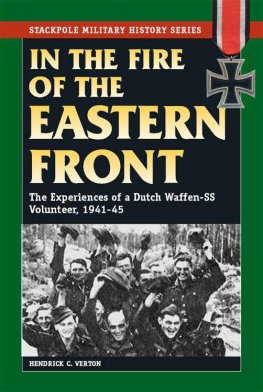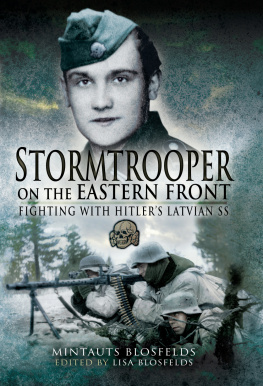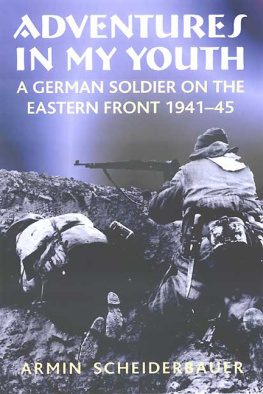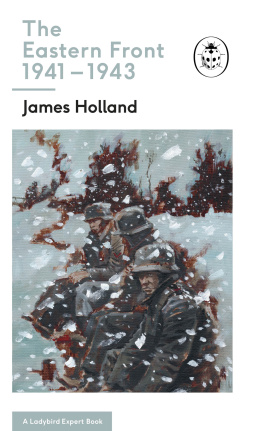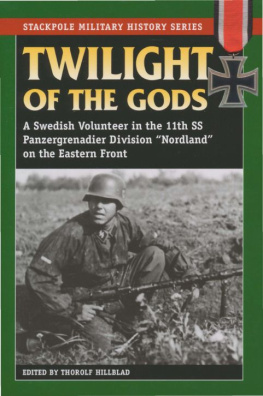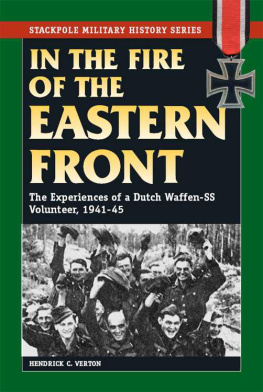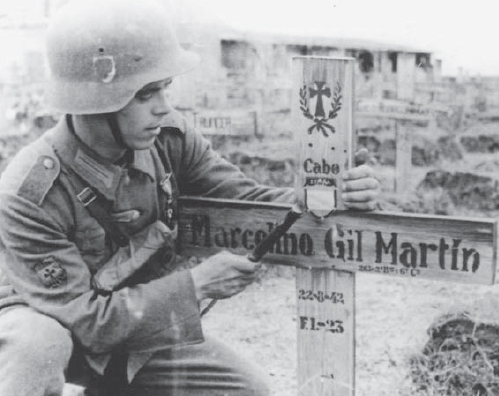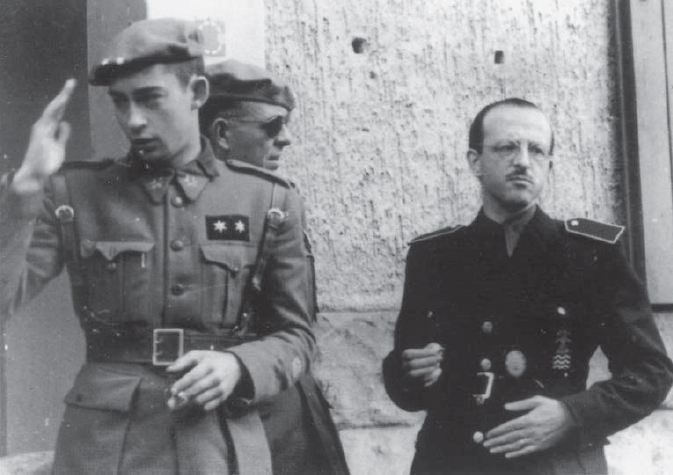WARRIOR 142
BLUE DIVISION SOLDIER 194145
Spanish Volunteer on the Eastern Front
| C. CABALLERO JURADO | ILLUSTRATED BY RAMIRO BUJEIRO |
| Series editors Marcus Cowper and Nikolai Bogdanovic |
CONTENTS
BLUE DIVISION SOLDIER 194145
INTRODUCTION
Spain did not take part in either World War I or World War II. However, despite remaining neutral in the latter, many Spanish volunteers fought on the German side. The reason so many Spaniards decided to participate in this way has its roots in the Spanish Civil War of 193639. During that conflict, due to their anti-communist ideology, the Nacionales (Nationalists) received aid from both Fascist Italy and Hitlers Third Reich. On the other side, the Popular Front was supported by the Soviet Union.
Without Soviet help, the revolutionary regime of the Spanish Popular Front (established in February 1936) would have collapsed a few months after the start of the Civil War. However, the USSR sent large quantities of modern armaments as well as military personnel to aid the Spanish Republican Army. The Soviet Union also organised the arrival of the International Brigades. During the Civil War, the left wing of the Partido Socialista Obrero Espaol (Spanish Socialist Workers Party), sympathetic to the Soviet Union, and the Spanish Communist Party, took almost complete control of the areas of Spain controlled by the Popular Front. These elements within the Popular Front were responsible for instigating a form of Stalinist terror, assassinating several thousand of their right-wing enemies.
When the Civil War ended in April 1939, those who had fought on the Nationalist side retained a deep hatred towards the Soviet Union and felt a sense of gratitude towards Italy and Germany. Although it was an exaggeration, the Nationalists blamed the Soviet Union for the origin and long duration of the Civil War.
With the Nationalist victory, a new regime was installed in Spain, which bore similarities to both Fascist Italy and Nazi Germany. The only political party authorised by the new regime was the Falange. Before the Civil War it had been a minority fascist party, but it had grown massively in the months preceding and during the war. The party members, especially those belonging to the so-called Old Guard (those who had belonged to the Falange before the Civil War) believed Spain was in need of a revolution along the lines of the Italian and German models. They wanted a revolution that would bring both social justice and ambitious economic modernisation. These policies were to be accompanied by nationalist fervour, and put into effect by a dictatorship that would mobilise the masses, especially the countrys youth. With these measures, they believed, Spain would again be a great power.

The initial batch of volunteers for the division was concentrated in Spanish military barracks in overcrowded conditions. Therefore, it was not uncommon for men to have to eat their meals sitting on the floor. The Spanish Army infantry badge can be seen worn on the collars of the mens blue Falangist shirts (adorned with the yoke and arrows) and on their red berets. (Fundacin Divisin Azul, FDA)
Franco, the head of state and Generalissimo of the Armed Forces, was also head of the Falange. Franco had never been a Falangist, but believed his regime needed an organisation capable of mobilising popular support. However, despite appearances, the Falange had hardly any real power within Spain, which was, in reality, in the hands of institutions like the Armed Forces and the Catholic Church. The most conservative social and economic groups continued to run the country, much to the despair of the Falangists.
The start of World War II saw a pact made between Hitler and Stalin for the carving up of Poland. In Spain, the winners of the Civil War sympathised with Germany, but could not approve under any circumstances of an alliance between the Third Reich and the Soviet Union. The German victory in Poland was not a cause for much celebration in Spain. However, following events in May and June of 1940 when the Wehrmacht crushed France and forced the British to abandon the Continent, the reaction was more enthusiastic. For many Spaniards, France and the United Kingdom were historical enemies. The British occupation of Gibraltar in particular was felt as an affront to national pride.
Following Hitlers victory over France, important sectors of Francos regime pressured in favour of the country entering the war on the Axis side, while Spain declared itself non-belligerent. Franco, however, was in no hurry. He asked Germany for large supplies of weapons and munitions and the assurance that, following the Axis victory, Spain would recover Gibraltar as well as receiving large tracts of Frances African empire. As Germany could not grant these requests, Spains participation in the war was postponed sine die.
The creation of the Blue Division was to lead to a fresh confrontation between the more conservative senior military commanders and the leadership of the Falange; both wanted to control the recruitment process and organisation of the unit. This photograph was taken at one of the barracks where the volunteers were being concentrated. Left, an Army provisional (wartime service commission) lieutenant. Right, a jerarca (political leader) of the Falange. (FDA)
Meanwhile, in Spain the tensions between the different factions that formed the winning side had become acute. The Falangists saw their revolutionary programme forgotten, while other groups represented in Francos regime conservatives, Catholics and monarchists elbowed them out of the power stakes. Furthermore, these factions were also pressuring Franco to cut his ties with the Falange and restore the monarchy. These groups did not view Nazi Germany favourably, considering Hitlers regime to be too dangerously revolutionary for their liking.
For the Falangists, the only possibility that Franco would embark on their political programme rested with the Axis. In a Fascist Europe, Spain would have to follow the same path and carry out the Falangist revolution, and in the New Order that would arise following the Axis victory Spain would be a great power.
When the Wehrmacht attacked the USSR on 22 June 1941, the event was to have a profound impact in Spain. In the days that followed, something happened in Spain that did not even occur in the Third Reich itself: there were large-scale popular demonstrations in the streets of many Spanish towns and cities to celebrate the start of the campaign against communism and to ask that Spanish volunteers be sent. These demonstrations were organised by the Falange, although they were echoed among the people, because the different factions that had supported the Nationalist uprising on 18 July 1936 were unanimously anti-communist.
The Catholic Church had suffered atrociously during the Civil War. Thousands of priests had been assassinated and many thousands of religious buildings had been destroyed. The Vatican had qualified the war against the Popular Front as a Holy Crusade. Therefore, although the neo-paganism of the Nazis was alarming for Spanish Catholics, it was still considered far preferable to the hatred inspired by the Soviet Union. Other conservative groups in Spain were stupefied to see the United Kingdom ally itself with Stalin. Many of them, who until then would have preferred to see a British victory over Germany, changed their opinion when it became clear that the defeat of Germany would be a victory for Stalin.
Next page

